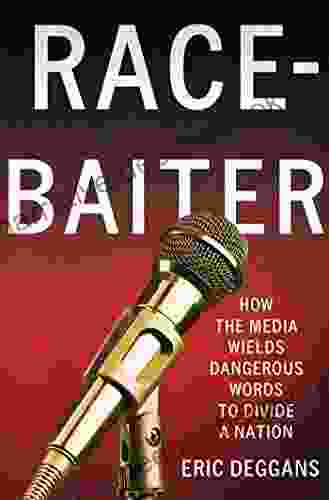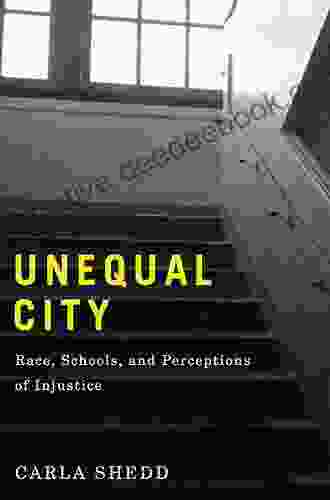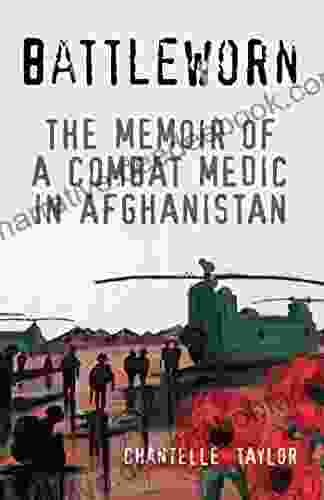Unequal City: Race, Schools, and Perceptions of Injustice

The United States is a nation with a long history of racial inequality. This inequality is reflected in many aspects of American life, including education. In schools, students of color are more likely to be poor, to attend underfunded schools, and to be suspended or expelled than their white peers. These disparities are not simply the result of individual choices or cultural differences; they are the result of systemic racism, which has created and maintained a society in which people of color are denied equal opportunities.
One of the most important ways that racism affects education is through residential segregation. Segregation is the separation of people into different neighborhoods based on their race or ethnicity. In the United States, segregation has a long history, dating back to the Jim Crow era. Even after the Civil Rights Act of 1964 outlawed segregation, it continued to be practiced through redlining, a practice in which banks and other lenders refused to lend money to people of color in certain neighborhoods. This practice created and maintained racially segregated neighborhoods, which have had a lasting impact on education.
4.4 out of 5
| Language | : | English |
| File size | : | 4485 KB |
| Text-to-Speech | : | Enabled |
| Screen Reader | : | Supported |
| Enhanced typesetting | : | Enabled |
| Word Wise | : | Enabled |
| Print length | : | 241 pages |
Segregated neighborhoods lead to unequal schools. Schools in predominantly white neighborhoods are typically better funded than schools in predominantly black and brown neighborhoods. This is because property taxes are the primary source of funding for public schools, and homes in white neighborhoods are typically worth more than homes in black and brown neighborhoods. As a result, schools in white neighborhoods have more resources to spend on teachers, supplies, and facilities. This can lead to better educational outcomes for students in white neighborhoods.
In addition to being underfunded, schools in predominantly black and brown neighborhoods are also more likely to be overcrowded and have less experienced teachers. This can make it difficult for students to learn and succeed. As a result, students of color are more likely to drop out of school or to be held back a grade than their white peers.
The disparities in educational opportunities between white students and students of color are not simply the result of individual choices or cultural differences; they are the result of systemic racism. This racism has created and maintained a society in which people of color are denied equal opportunities.
The legacy of segregation and discrimination has created a system of education that is unequal and unjust. This system perpetuates racial inequality and makes it difficult for students of color to succeed. In order to create a more just and equitable society, we must address the systemic racism that has created and maintained these disparities.
How Perceptions of Injustice Affect Educational Outcomes
In addition to the direct effects of racism on educational opportunities, there are also indirect effects that can be just as damaging. One of these indirect effects is the way that perceptions of injustice can shape educational outcomes.
When students feel that they are being treated unfairly, they are less likely to be motivated to learn. They may also be more likely to engage in disruptive behavior or to drop out of school altogether.
Research has shown that perceptions of injustice can have a negative impact on educational outcomes, even for students who are not directly experiencing racism. For example, one study found that black students who perceived their teachers as being biased against them were more likely to have lower grades and to be suspended from school.
Perceptions of injustice can also lead to a sense of hopelessness and despair. When students feel that they are powerless to change their situation, they may give up on school altogether.
Creating More Just and Equitable Schools
The goal of education should be to provide all students with the opportunity to succeed. However, in the United States, this goal is not being met. The system of education is unequal and unjust, and this inequality is reflected in the experiences of students of color.
In order to create more just and equitable schools, we must address the systemic racism that has created and maintained these disparities. This means investing in early childhood education, providing more funding for schools in low-income neighborhoods, and ending the school-to-prison pipeline.
We also need to create more inclusive school environments. This means creating schools where all students feel welcome and respected, regardless of their race, ethnicity, gender, or sexual orientation.
Creating more just and equitable schools will not be easy, but it is essential. We must work together to create a society in which all children have the opportunity to succeed.
The United States is a nation with a long history of racial inequality. This inequality is reflected in many aspects of American life, including education. In schools, students of color are more likely to be poor, to attend underfunded schools, and to be suspended or expelled than their white peers. These disparities are not simply the result of individual choices or cultural differences; they are the result of systemic racism, which has created and maintained a society in which people of color are denied equal opportunities.
The legacy of segregation and discrimination has created a system of education that is unequal and unjust. This system perpetuates racial inequality and makes it difficult for students of color to succeed. In order to create a more just and equitable society, we must address the systemic racism that has created and maintained these disparities.
4.4 out of 5
| Language | : | English |
| File size | : | 4485 KB |
| Text-to-Speech | : | Enabled |
| Screen Reader | : | Supported |
| Enhanced typesetting | : | Enabled |
| Word Wise | : | Enabled |
| Print length | : | 241 pages |
Do you want to contribute by writing guest posts on this blog?
Please contact us and send us a resume of previous articles that you have written.
 Book
Book Page
Page Chapter
Chapter Text
Text Reader
Reader Library
Library Magazine
Magazine Newspaper
Newspaper Paragraph
Paragraph Sentence
Sentence Shelf
Shelf Glossary
Glossary Preface
Preface Annotation
Annotation Manuscript
Manuscript Scroll
Scroll Codex
Codex Bestseller
Bestseller Classics
Classics Autobiography
Autobiography Memoir
Memoir Encyclopedia
Encyclopedia Dictionary
Dictionary Thesaurus
Thesaurus Resolution
Resolution Catalog
Catalog Card Catalog
Card Catalog Borrowing
Borrowing Periodicals
Periodicals Study
Study Scholarly
Scholarly Lending
Lending Reserve
Reserve Academic
Academic Special Collections
Special Collections Dissertation
Dissertation Storytelling
Storytelling Awards
Awards Reading List
Reading List Textbooks
Textbooks Roberto Sandoval
Roberto Sandoval Kate Dicamillo
Kate Dicamillo Napoleon Bonaparte
Napoleon Bonaparte Edward G Goetz
Edward G Goetz Laurent Alonso
Laurent Alonso Tim Rayborn
Tim Rayborn Miranda Asebedo
Miranda Asebedo Joseph O Chapa
Joseph O Chapa Elizabeth Gilbert
Elizabeth Gilbert Lorelei Brogan
Lorelei Brogan William Ferrara
William Ferrara Carrie Summers
Carrie Summers Sally Wen Mao
Sally Wen Mao Jessica K Quillin
Jessica K Quillin John Bradshaw
John Bradshaw Carl Johnson
Carl Johnson Pino Torre
Pino Torre Georg Fischer
Georg Fischer Emily Bunney
Emily Bunney Carol E Mull
Carol E Mull
Light bulbAdvertise smarter! Our strategic ad space ensures maximum exposure. Reserve your spot today!
 Henry David ThoreauFollow ·18.8k
Henry David ThoreauFollow ·18.8k Oscar WildeFollow ·7k
Oscar WildeFollow ·7k Patrick RothfussFollow ·19.7k
Patrick RothfussFollow ·19.7k Rob FosterFollow ·6.6k
Rob FosterFollow ·6.6k Grant HayesFollow ·15.4k
Grant HayesFollow ·15.4k Neil ParkerFollow ·7.8k
Neil ParkerFollow ·7.8k Norman ButlerFollow ·2.5k
Norman ButlerFollow ·2.5k Stephen FosterFollow ·18.3k
Stephen FosterFollow ·18.3k

 Dallas Turner
Dallas TurnerParasols and Peril: Adventures in Grace
In the quaint town...

 Caleb Carter
Caleb CarterFlight Attendant Joe: A Dedicated Professional in the...
Flight Attendant Joe...

 Jerry Ward
Jerry WardPick Lottery The List For 23 States August 15 2024
The Pick Lottery is a multi-state lottery...

 Hudson Hayes
Hudson HayesHow the Media Wields Dangerous Words to Divide a Nation
In a world where the media is...

 Curtis Stewart
Curtis StewartThe Magic Mala: A Story That Changes Lives
In the realm of ancient traditions and...

 Raymond Parker
Raymond ParkerEarthly Meditations: A Poetic Tapestry of Nature,...
In the realm of contemporary...
4.4 out of 5
| Language | : | English |
| File size | : | 4485 KB |
| Text-to-Speech | : | Enabled |
| Screen Reader | : | Supported |
| Enhanced typesetting | : | Enabled |
| Word Wise | : | Enabled |
| Print length | : | 241 pages |












